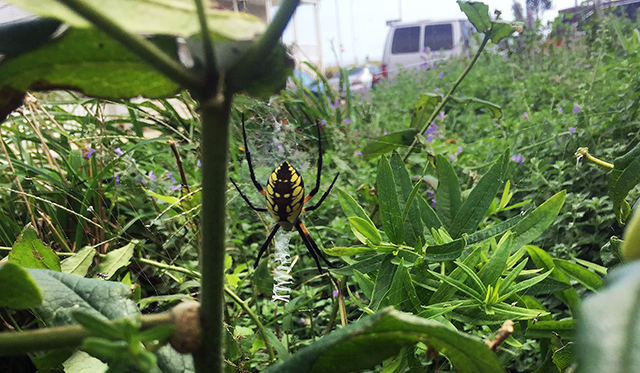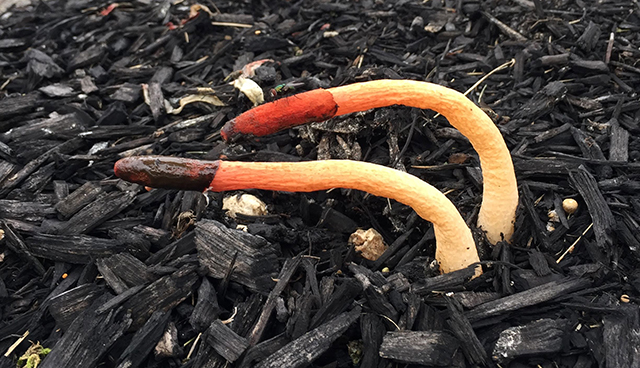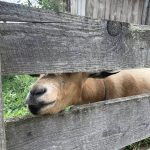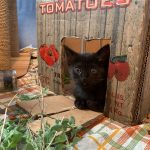Discoveries in the Garden
Nature is bizarre and fascinating. Discovering new things in my small garden world is exciting and makes me think of all that’s still undiscovered in nature.
I came across two unfamiliar garden creatures this week. The first was suspended between the milkweed and a daylily stalk from my daylily plant in the front yard. It was a huge spider – about 2 inches long!
In the past four years that I’ve been manicuring the garden, I never came across a spider like this. I plugged her description in google: large yellow and black body, orange/blackish legs, white head. My visitor was a yellow garden spider (argiope aurantia). These beautiful but fierce-looking arachnids can be found throughout the United States, Canada, Mexico, and Central America. They spin their webs in sunny areas between plants and are said to be common. My garden sounds like the ideal summer resort, I wonder why this was my first encounter?
The yellow garden spider feasts on flies, bees and other insects. They will bite people if threatened but their venum only paralyzes smaller prey. I noticed the spider because of its distinct zigzagging web, which is called a stabilimentum. It’s unknown why the garden spider creates such a unique pattern. Some scientists theorize its to alert birds, so they don’t fly into the web and destroy it.
Male garden spiders are three times smaller than the female. They pluck the female’s web to entice her. The males are no longer needed after mating so they die. The females can live a long life up to 3
years in warmer climates.
Like the spider, I’m often weaving through the tall grass and giant hyssops to manage the weeds. I’m going to think twice next time, knowing that the enormous yellow garden spider can be nestled somewhere within.
The second more bizarre garden “creature” I found this week was an elegant stinkhorn. There is nothing elegant or graceful about this fungus. It looks like a… let’s just say nature really has a sense of humor! It’s orange in color with a slimy brown tip that’s covered in smelly spores. The odor attracts flies and other insects. Their presence distributes the spores as they fly away.
There are 22 different types of stinkhorns and they grow in damp areas, on forest floors and under leaves. In urban settings they will pop out from under mulched planting beds in late August and early fall. This is the first year I’ve mulched the yard so it makes sense that now they have appeared.
Want to eat an elegant stinkhorn? Give it a try. It won’t poison you (or make you take a ride on the yellow submarine) but it will taste terrible. But file that info away for the next time you’re starving in the woods.
Want a good laugh? click here.
























